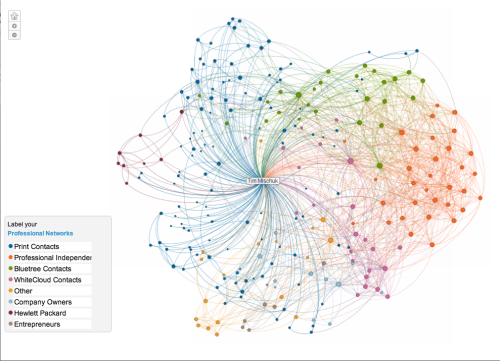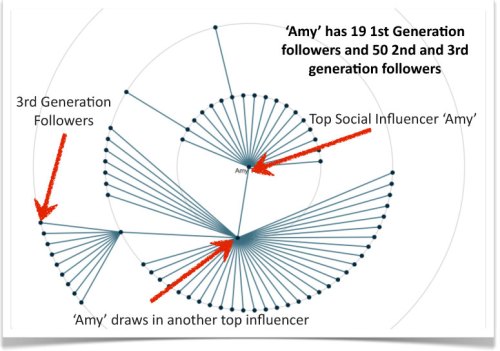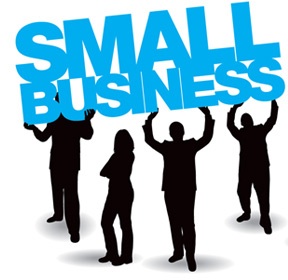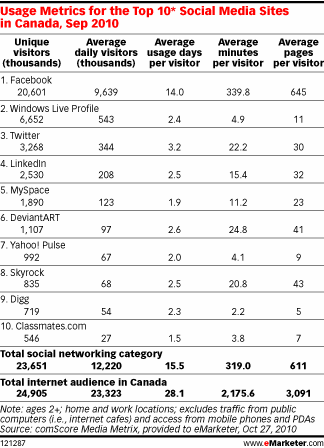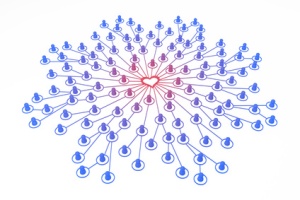
A networked Advertising Model
The impact of the mom bloggers, niche business bloggers will continue to make in roads into the advertising market. Software systems will aggregate the information from these posts and report this back to marketing and ad agencies. Brands will begin to use these bloggers, power Twitter and Facebook users to publicize and drive awareness for new products and services.Takeaway: Social Influencers are now being tracked and those with significant followers will be contacted by brands for promotion and awareness.
2) Increasing Importance of Personal Branding
Almost all people will revert to reviewing your status online to determine your credibility, impact and skills. Here are some key predictions:
• Personal brand will become consolidated
• Relative online transparency will create a positive net impact
• Job hunters will increasingly use online references to find the right match
• Developing a strong online presence will be as important as the development of your financial credit rating
• Third party reviews and recommendations will increase
Takeaway: Start/Enhance your profile on Linked-in and Facebook and engage with friends and professionals.
3) Content Distribution through Social Media
We all know that “Content is King” strong through the 1990s and then “Links became Queen” during the 2000 era. Today its also essential to keep customers engaged with a brand through Social network strategy via docile and mobile touchpoints such as Twitter, Facebook, Linked-In, mobile apps and email. Effectively delivery of information through new media such as YouTube, Slideshare will grow.
Takeaway: Start/Enhance your blog and network information to major social communities.
4) Digital Direct Marketing
Prospects and customers increasingly use multiple channels and use both offline and online media. Online channels such as Facebook and Twitter are powerful but email cannot be discounted in direct marketing. Since outbound contacts are still vital use the right email message frequency and content to help repeat sales. Firms have developed an automated email lifecycle with the right business rules to maximise engagement and sale. Many can attribute a trackable revenue value of between $50 and $150 per email per year.
Takeaway: Use email bi-weekly to connect with customers and allow them to share the content on social media to acquire net new opt-ins.
5) Twitter for Customer Support
The main goal of customer service is to help someone resolve their issues. While phone conversations can help solve problems, wait times do not. Twitter is a lightning-fast platform that can help sift through and solve problems quickly. If it’s a small issue, a single tweet may be enough. For a more complex problem, the brand can initiate a deeper conversation with the customer. Since everything is transparent, people prefer almost real-time responses and search for other questions from customers. Twitter will increase but still has a small foot-print in Customer Support. According to a recent post by Diane Clarkson of Forrester data show the number of online consumers to use Twitter for customer support to be under 1%. (Source: North American Technographics Customer Experience Online Survey, Q4 2009 and US Online Omnibus Q4 2010.)
Takeaway: Review some of your customer support options and experiment with Twitter.
6) Search Engine Optimization Gets More Complex.
Customers naturally use search engines as their primary vehicle to find information on products and services. But its not a one search engine game anymore as Google’s been joined by Bing in the US market and there are important local players like China’s Baidu and Russia’s Yandex. Now you have local search which has become increasingly important and ranked high on Google search. Yelp and FourSquare are significant players in Local Search.
Takeaway: Hire an experienced SEO firm to support your engagement.
7) Personalized Marketing Customizes Messages To Individual.
Expect more personalization capability to be embedded in websites in 2011. Regular visitors to a web site will see a page based on all the information collected from previous visits. Marketers will present personalized sites to these customers by organizing information and prioritizing it based on the individual’s liking. Products and services offered on those pages will be pre-configured. “Anonymous” visitors to websites will get customized messages based on referring URL, search terms, geo-location and other insights. Personalized marketing will be extended beyond the website to other digital channels, including social media marketing, mobile marketing, and email marketing.
Takeaway: Using Personalized URL’s or PURL’s eerily brings personalization to the end user.





